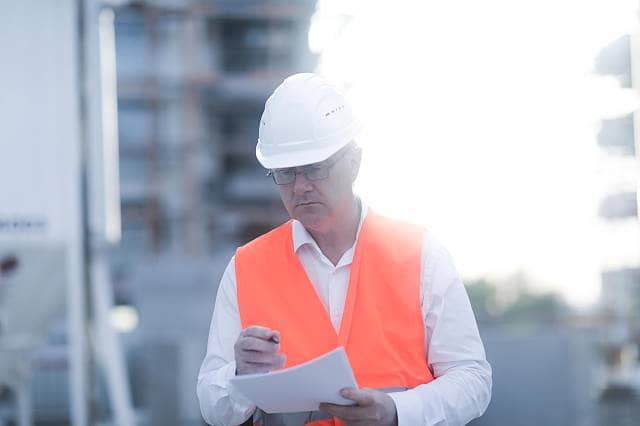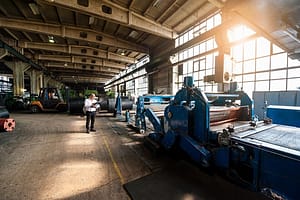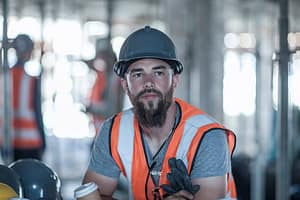Construction sites are bustling environments where safety must be a top priority. Adhering to strict safety standards not only protects workers but also ensures that projects are completed efficiently and without costly delays.
Here, we’ll explore the top safety standards that every construction site should meet to maintain a secure working environment.
1. Proper training and certification
Comprehensive training programs
Every worker on a construction site should undergo comprehensive safety training tailored to their specific role. This includes understanding how to operate machinery safely, recognising potential hazards, and knowing the correct procedures to follow in case of an emergency.
Certification requirements
Ensure that all workers have the necessary certifications for their roles. For example, heavy machinery operators should possess valid licenses, and scaffolders should be certified to erect and dismantle scaffolding safely. Regularly updated training programs help keep skills sharp and knowledge current.
2. Use of Personal Protective Equipment (PPE)
Mandatory PPE
Personal Protective Equipment (PPE) is essential for minimising risk on construction sites. This includes helmets, gloves, safety glasses, high-visibility clothing, and steel-toed boots. All workers should be equipped with the appropriate PPE for their tasks.
Different tasks may require specific PPE; for instance, welding requires face shields and fire-resistant clothing, while working with chemicals might need specialised gloves and respirators.
Regular inspections
Regularly inspect PPE for wear and tear and replace items as necessary. Damaged or worn-out equipment can compromise safety, so maintaining a strict inspection routine is crucial. Establish a schedule for PPE checks, ideally at the start and end of each shift, and keep records of these inspections.
Encourage workers to report any damaged equipment immediately and provide training on how to properly care for and store their PPE to extend its lifespan.
3. Site security measures
Controlled access
Implement controlled access points to ensure that only authorised personnel enter the construction site. This can be achieved through the use of security gates, ID badges, and sign-in/sign-out procedures.
Surveillance systems
Install surveillance cameras to monitor site activity. Not only does this deter unauthorised access, but it also allows for the review of incidents and ensures that safety protocols are being followed.
4. Machinery and equipment safety
Regular maintenance
All machinery and equipment must undergo regular maintenance to ensure they are in good working condition. Scheduled maintenance helps prevent equipment failure that could lead to accidents.
Safe operation procedures
Operators should follow strict guidelines when using machinery. This includes conducting pre-operation checks, adhering to manufacturer instructions, and not exceeding equipment limits.
5. Fall protection systems
Guardrails and safety nets
Falls are one of the most common hazards on construction sites. Install guardrails, safety nets, and personal fall arrest systems in areas where there is a risk of falling. Ensure these systems are regularly inspected and maintained.
Training on fall risks
Educate workers on the risks of falls and the proper use of fall protection equipment. Training should cover how to correctly wear and use personal fall arrest systems and the importance of adhering to safety protocols.
6. Hazard communication
Clear signage
Clearly mark hazardous areas with appropriate signage. This includes warning signs for high-voltage areas, heavy machinery zones, and areas where protective gear is required.
Safety Data Sheets (SDS)
Maintain accessible Safety Data Sheets (SDS) for all hazardous materials on site. Workers should be trained on how to read and understand these sheets, which provide crucial information on handling and responding to hazardous substances.
7. Build warranties and compliance
Quality assurance
Quality assurance processes should be in place to ensure that all construction work meets the required standards and specifications. This includes regular quality checks and adherence to best practices.
Build warranties
A build warranty, such as those offered by Buildsafe, can provide additional assurance that construction work meets high safety and quality standards. These warranties cover potential defects and structural issues, offering peace of mind and protection for both contractors and clients.
8. Emergency preparedness
Emergency action plan
Develop a comprehensive emergency action plan that outlines procedures for various emergencies, such as fires, medical incidents, and natural disasters. This plan should be communicated to all workers through regular training sessions and easily accessible written materials. Regularly review and update the plan to incorporate any new safety protocols or lessons learned from past incidents.
First aid training and kits
Ensure that a sufficient number of workers are trained in first aid. Designate specific individuals as first responders and provide them with more advanced training. First aid kits should be easily accessible and fully stocked with supplies tailored to the specific risks of the site. Regularly check and replenish the kits as necessary, and keep a record of the inventory to ensure nothing is missed.
9. Health and safety inspections
Routine inspections
Conduct routine health and safety inspections to identify and address potential hazards. These inspections should be thorough and documented, with follow-up actions taken to rectify any issues. Assign a dedicated safety officer to oversee these inspections and ensure that any identified risks are mitigated promptly.
Third-party audits
Consider engaging third-party safety auditors to review your site’s safety standards. Independent audits provide an unbiased assessment of your safety protocols and can highlight areas for improvement. Regular third-party audits can also help demonstrate compliance with industry standards and reassure stakeholders that safety is a top priority.
10. Waste management
Proper disposal procedures
Last but by no means least, implement strict procedures for the disposal of construction waste. This includes hazardous materials, which should be handled and disposed of according to regulatory requirements. Train workers on these procedures to ensure compliance and avoid any environmental or health hazards.
Recycling programs
Where possible, introduce recycling programs for materials like metal, wood, and concrete. Not only does this support environmental sustainability, but it also keeps the site cleaner and safer.
Set up designated recycling areas on-site and educate workers on the importance of separating recyclable materials from general waste. Regularly review and update recycling practices to improve efficiency and compliance.
The lowdown
Maintaining top safety standards on construction sites is a multifaceted effort that involves proper training, the use of protective equipment, regular maintenance of machinery, and thorough emergency preparedness.
By adhering to these standards, construction companies can create a safer work environment, reduce the risk of accidents, and ensure the successful completion of projects.






Leave a Comment